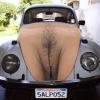280rwkW at 1.2 Bar
Announcements
-
Similar Content
-
Latest Posts
-
Also with the pump like that it’s on the bottom of the tank, as I tried to drop the pump lower and my fuel hanger wouldn’t seat correctly
-
Don’t mind the extra plug, that’s just the fpg fuel level sensor thing
-
By Murray_Calavera · Posted
Post picks of your hanger and pump setup as I have above. -
bumping this post as im still having dramas, my fuel pick up is sitting on the bottom of the tank, my pump gets a constant 13 volts through a relay, my fuel pressure holds consistently without fluttering or dropping, yet as soon as im near half a tank of fuel my car starts fuel starving and leaning out, it cant be due to g force as it never pulls hard enough before it starts breaking up, any help would be much appreciated
-
By Dose Pipe Sutututu · Posted
Just a thought, was that car and auto at any point of its life? If so, maybe whoever bridged the inhibitor switch/circuit did a not so good job.
-


1.thumb.png.36afd656b26d55f5d425fc76e21561f2.png)


Recommended Posts
Create an account or sign in to comment
You need to be a member in order to leave a comment
Create an account
Sign up for a new account in our community. It's easy!
Register a new accountSign in
Already have an account? Sign in here.
Sign In Now